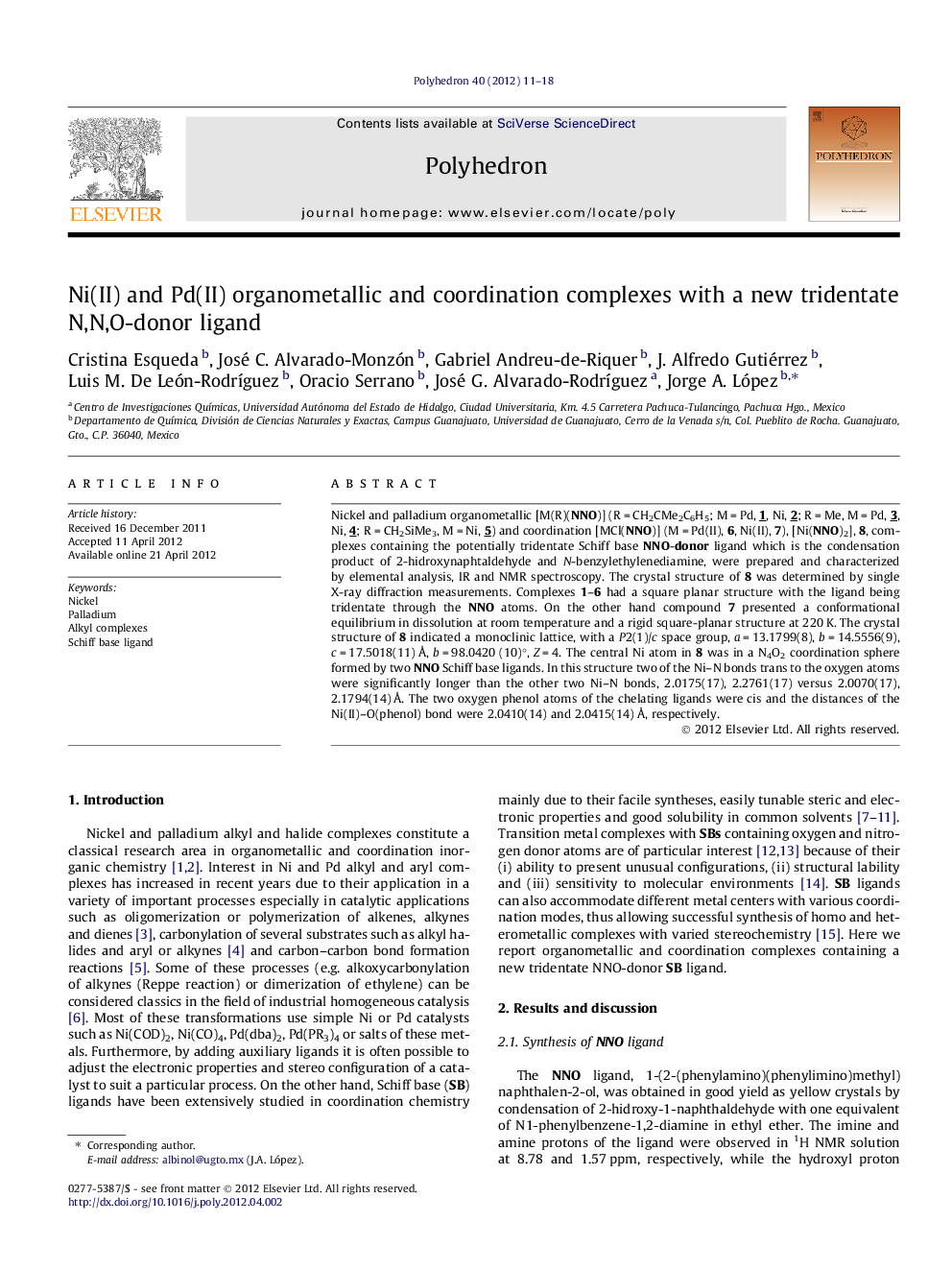| Article ID | Journal | Published Year | Pages | File Type |
|---|---|---|---|---|
| 1337473 | Polyhedron | 2012 | 8 Pages |
Nickel and palladium organometallic [M(R)(NNO)] (R = CH2CMe2C6H5; M = Pd, 1, Ni, 2; R = Me, M = Pd, 3, Ni, 4; R = CH2SiMe3, M = Ni, 5) and coordination [MCl(NNO)] (M = Pd(II), 6, Ni(II), 7), [Ni(NNO)2], 8, complexes containing the potentially tridentate Schiff base NNO-donor ligand which is the condensation product of 2-hidroxynaphtaldehyde and N-benzylethylenediamine, were prepared and characterized by elemental analysis, IR and NMR spectroscopy. The crystal structure of 8 was determined by single X-ray diffraction measurements. Complexes 1–6 had a square planar structure with the ligand being tridentate through the NNO atoms. On the other hand compound 7 presented a conformational equilibrium in dissolution at room temperature and a rigid square-planar structure at 220 K. The crystal structure of 8 indicated a monoclinic lattice, with a P2(1)/c space group, a = 13.1799(8), b = 14.5556(9), c = 17.5018(11) Å, b = 98.0420 (10)°, Z = 4. The central Ni atom in 8 was in a N4O2 coordination sphere formed by two NNO Schiff base ligands. In this structure two of the Ni–N bonds trans to the oxygen atoms were significantly longer than the other two Ni–N bonds, 2.0175(17), 2.2761(17) versus 2.0070(17), 2.1794(14) Å. The two oxygen phenol atoms of the chelating ligands were cis and the distances of the Ni(II)–O(phenol) bond were 2.0410(14) and 2.0415(14) Å, respectively.
Graphical abstractNickel and palladium organometallic and coordination complexes containing the new potentially tridentate NNO-donor Schiff base ligand, are presented.Figure optionsDownload full-size imageDownload as PowerPoint slide
